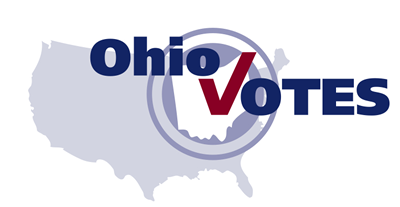 Washington, March 14 – As voters prepare to head to the polls in Ohio tomorrow, RespectAbility has released its Ohio Disability Voter Guide. The #PwDsVote 2016 Campaign Questionnaire was designed for people with disabilities (PwDs) and those who love them to know where candidates stand on the issues. The questionnaire asked all of the presidential candidates on both sides of the aisle to comment on 16 disability questions. Former Sec. of State Hillary Clinton and Sen. Bernie Sanders responded by addressing all of the questions, and Ohio Gov. John Kasich filled out parts of the questionnaire. They each have significantly different views on the issues. Despite numerous requests in person and by phone and email, the campaigns of Senators Ted Cruz and Marco Rubio and Republican frontrunner Donald Trump have not yet filled out the questionnaire.
Washington, March 14 – As voters prepare to head to the polls in Ohio tomorrow, RespectAbility has released its Ohio Disability Voter Guide. The #PwDsVote 2016 Campaign Questionnaire was designed for people with disabilities (PwDs) and those who love them to know where candidates stand on the issues. The questionnaire asked all of the presidential candidates on both sides of the aisle to comment on 16 disability questions. Former Sec. of State Hillary Clinton and Sen. Bernie Sanders responded by addressing all of the questions, and Ohio Gov. John Kasich filled out parts of the questionnaire. They each have significantly different views on the issues. Despite numerous requests in person and by phone and email, the campaigns of Senators Ted Cruz and Marco Rubio and Republican frontrunner Donald Trump have not yet filled out the questionnaire.
This Super Tuesday may be the most important one yet as Ohio and Florida become make it or break it states for Kasich and Rubio who call these states home. In Ohio specifically, Trump and Kasich, who is the governor of Ohio, are running neck and neck, each tied for 33 percent in a recent CBS News poll and tied for 38 percent each in a Quinnipiac University poll. Kasich is doing well among voters who feel the economy is in good shape, per the CBS poll. While neither poll asked any questions about disability specific issues, employment is a top issue for people with disabilities and their families. Kasich, who is the only Republican left who has answered the #PwDsVote Campaign Questionnaire, often touts his record in Ohio in growing the economy for all people. On the campaign trail, he has talked about his state budget’s biggest percentage increase being for people with developmental disabilities. While Cruz, Rubio and Trump have yet to complete the questionnaire, they have answered questions about a variety of disability topics.
On the Democratic side, both Clinton and Sanders have completed the questionnaire. According to new polling from Quinnipiac University published Monday, Sanders has closed a nine-point deficit, now trailing Clinton by only five points, 46 percent to 51 percent. Last week Sanders pulled off a massive upset win in Michigan, which is culturally and economically comparable to Ohio. Both Clinton and Sanders have addressed disability issues on the trail and have made a real effort to ensure that their events have ADA sections with enough room for those using wheelchairs and other people with disabilities. Furthermore, both campaigns are ensuring that ASL interpreters are present at all of their large events.
Fully one-out-of-five voters have a disability, and 52 percent of likely voters have a loved one with a disability. Only 34 percent of working-age Americans with disabilities have jobs, despite the fact that the vast majority want to work. More than 11 million working age people with disabilities are now living on government benefits in our country.
RespectAbility President Jennifer Laszlo Mizrahi said, “Our community is looking for jobs so we can achieve the American dream, just like anyone else. It is vital for us to know where the candidates stand economic, stigma, education, safety, transportation, housing, healthcare, foreign affairs and other issues. The candidates have hugely different ideas about how to deal with the issues. Thus, it’s extremely important to read their full answers so you can understand their vast differences.”
More than 1.5 million people in Ohio have a disability. Of those, 812,500 are of working age (ages 21 to 64). More than 171,000 people with disabilities aged 18 to 64 are receiving government benefits in Ohio.
None of the states voting on Tuesday employ a large percentage of their citizens with disabilities. Just roughly 30 percent of people with disabilities are employed nationally, and North Carolina and Florida are even with the national average. Missouri (33 percent), Ohio (34 percent) and Illinois (36 percent) do not do much better. This lack of employment for people with disabilities creates poverty, powerlessness, and poor health. Polls and studies show that people with disabilities want the opportunity to have the dignity and independence that jobs provide.
America has 1.2 million youth with disabilities, between the ages of 16 and 20. Each year 300,000 of them (50,300 in Ohio alone) age into what should be the workforce, but stigmas and lack of knowledge about the capabilities of people with disabilities means that most do not find employers willing to hire them. Young adults with disabilities in all of the Super Tuesday states are hoping to find work. They have high expectations and deserve the opportunity to achieve the American dream. Young people with disabilities may simply need some thoughtful help to transition into the workforce. See data on all 50 states here: State Data.
The questionnaire is purely for educational purposes as voters go to the polls. RespectAbility says they will continue to urge Cruz, Rubio and Trump to submit their ideas for the disability community.









[…] Super Tuesday may be the most important one yet as Ohio and Florida become make it or break it states for Kasich and Rubio who call these states […]